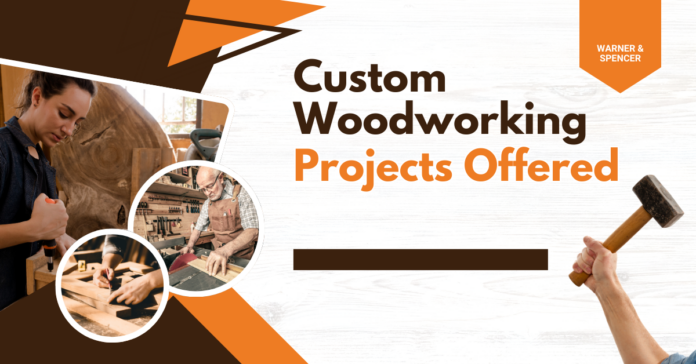Introduction
Building your own furniture is a rewarding and cost-effective way to personalize your home while developing valuable woodworking skills. Whether you’re a beginner or an experienced woodworker, DIY furniture projects can be a fun and fulfilling hobby. In this guide, we’ll walk you through the essential tools, materials, and step-by-step instructions to help you get started on your first woodworking project.
Benefits of Building Your Own Furniture
Cost-Effective
DIY furniture allows you to save money compared to store-bought pieces. With proper planning, you can create high-quality furniture at a fraction of the cost.
Customization and Creativity
When you build your own furniture, you have complete control over the design, size, and finish, allowing you to match your personal style and home décor.
Skill Development
Woodworking enhances problem-solving, craftsmanship, and precision skills, making it a fulfilling and educational hobby.
Sustainability
Using reclaimed wood or eco-friendly materials helps reduce waste and promotes sustainable living.
Essential Tools for DIY Furniture Projects
Basic Hand Tools
- Measuring tape – Ensures accurate dimensions.
- Claw hammer – Useful for assembling wooden pieces.
- Screwdrivers – Essential for fastening screws.
- Hand saw – Ideal for cutting wood manually.
Power Tools for Efficiency
- Drill and drill bits – Speeds up assembly and hole drilling.
- Circular saw or jigsaw – Makes precise cuts faster.
- Sander or sandpaper – Smooths out surfaces for a professional finish.
- Wood glue and clamps – Holds pieces together securely.
Safety Equipment
- Safety goggles – Protects your eyes from debris.
- Dust mask – Prevents inhalation of sawdust.
- Work gloves – Shields hands from splinters and sharp tools.
Choosing the Right Wood for Your Project
Types of Wood
- Softwood (Pine, Cedar, Fir) – Affordable and easy to work with.
- Hardwood (Oak, Maple, Walnut) – More durable but requires advanced tools.
- Plywood and MDF – Budget-friendly and great for simple projects.
Selecting the Best Wood for Your Project
- Consider strength and durability based on the furniture’s purpose.
- Ensure the wood is properly dried to prevent warping.
- Choose wood with a smooth grain for easier finishing.
Simple DIY Woodworking Projects for Beginners
1. DIY Wooden Bookshelf
Materials Needed:
- Plywood or solid wood planks
- Screws and wood glue
- Sandpaper and paint/stain
Steps:
- Measure and cut the wood according to your desired bookshelf dimensions.
- Assemble the frame using screws and wood glue.
- Attach the shelves at equal intervals.
- Sand and finish with paint or stain.
2. DIY Coffee Table
Materials Needed:
- Wooden planks for the tabletop and legs
- Screws and brackets
- Varnish or paint
Steps:
- Cut the tabletop and legs to size.
- Assemble the legs using screws and brackets.
- Attach the legs to the tabletop.
- Sand and finish for a polished look.
3. DIY Wooden Bench
Materials Needed:
- Solid wood planks
- Screws and wood glue
- Sandpaper and finish
Steps:
- Cut and assemble the bench frame.
- Secure the legs and seat with screws.
- Sand and stain for durability.
Tips for a Professional Finish
Sanding and Smoothing
- Use fine-grit sandpaper for a smooth surface.
- Always sand in the direction of the grain to prevent scratches.
Staining and Painting
- Apply a wood conditioner before staining to achieve an even finish.
- Use multiple thin coats of paint instead of one thick layer.
- Seal with polyurethane for added protection.
Proper Assembly Techniques
- Always pre-drill holes before inserting screws to prevent splitting.
- Use clamps to hold pieces in place for precise assembly.
- Allow wood glue to dry completely before moving the furniture.
Common Mistakes to Avoid
Using the Wrong Wood Type
- Match the wood type to the project’s purpose to ensure longevity.
Not Measuring Accurately
- Double-check all measurements before cutting.
Skipping the Sanding Step
- Sanding improves durability and finish quality.
Expanding Your Woodworking Skills
Intermediate Projects
- Dining table – Larger project requiring more precision.
- Cabinets – Introduces hinge installation techniques.
Joining Online Woodworking Communities
- Forums and YouTube tutorials provide valuable insights and troubleshooting tips.
- Local workshops offer hands-on experience and skill improvement.
Conclusion
Building your own furniture is a fulfilling hobby that enhances creativity, skills, and home aesthetics. With the right tools, materials, and patience, you can create high-quality furniture pieces suited to your needs. Start with small projects, learn from mistakes, and enjoy the process of bringing your designs to life!
For more DIY guides, visit Article Table.
Related Resources:
For additional woodworking tips and resources, check out Sunray Click.
